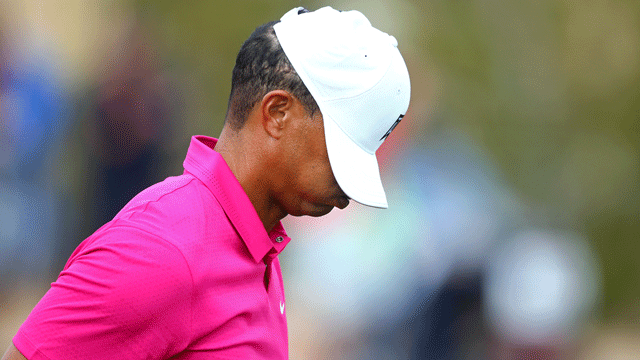NEWS
Case of the yips can affect even the greats, and can be tough to cure
By Nick Petaros
Published on

WATERLOO – When it happens to Tiger, people notice.
Such was the case at the start of the 2015 PGA Tour golf season when Woods' erratic chipping at the Waste Management Phoenix Open had golf analysts using the words yips to describe his struggles.
In golf terms, the yips has generally been defined as a pressure-induced involuntary muscle movement in which a golfer loses control of his shot.
According to a piece on the subject in "The New Yorker," Scottish golfer Tommy Armour coined the term and defined it as a "brain spasm that impacts the short game."
It's a word that has picked up steam in recent years.
"I think it's becoming more and more prevalent," Beaver Hills Country Club PGA Head Professional Brad Clark said. "Fifteen, twenty years ago, I had never really heard of anybody with the yips. It seems like more and more people talk about it like it's a malady that strikes golfers more often than it ever has.
"I find it interesting that they think that Tiger has the yips. It could be from thinking about too much with his technique."
It's a topic that can be sensitive to professions and avid golfers who pride themselves on mental toughness.
"It's all mental," said Mick Schuchmann, owner of Waterloo Golf Headquarters and a regular competitor in local tournaments. "You miss a couple two-footers under pressure and then it gets into your mind that you can't make them. Pretty soon those two-footers feel like 10-footers. Once your confidence is shaken, it's tough to get back."
Equipment from heavy putters to long putters has been used by golfers to counter the yips.
"I think the theory is the yip shows up the smaller muscles, the hands and the wrist," Clark said. "Anything that takes those muscles out a little bit. I think that makes it less apt to yip. A longer putter, heavier putter, a different grip, these big grips they're using now.
"I think all those are an effort to take the hands out of it a little bit so it reduces the urge to hit it with the hands as much, and make it more of a stroke with the shoulders and arms."
Pheasant Ridge Golf Course PGA Professional and Northern Iowa head golf coach John Bermel says he's dealt with the yips before, and there's no question it's a sensitive subject to most golfers. Bermel defines yips as an action that forces the club to pick up speed after the ball is gone.
"As far as putting goes, the way to get out of it is the putter comes to the inside more that you're used to," Bermel said. "As far as chipping and pitching, I think what happens is that the club goes back so slow that everybody is trying to accelerate through there and they accelerate too much. The back swing has to speed up a little bit. You can see Tiger when he's putting from off the green, that's what he's avoiding."
For golfers experiencing a mental roadblock, it may be time to switch something up.
"First, I think it's not a disease," Clark said. "I think you look at it in a different light. You have to change your attitude towards it first. Then I think you have to figure out a method of putting that maybe is completely different than what you've done before.
"I find if you just make small adjustments, it's hard for it to go away because the brain is connected with the way you've always putted. If you make a bigger adjustment, going to a long putter or a grip or stance that's completely different, I think that's kind of the route you have to go. You have to find a completely different method. ... Then you've got to perfect that method. It may not work right away you've got to practice it."
This article was written by Nick Petaros from Waterloo-Cedar Falls Courier, Iowa and was legally licensed through the NewsCred publisher network.
